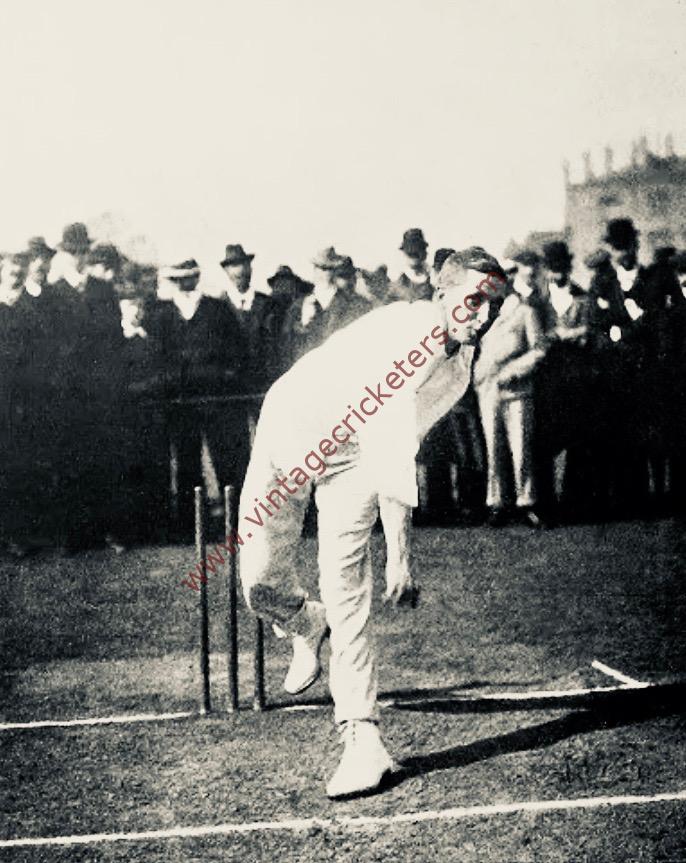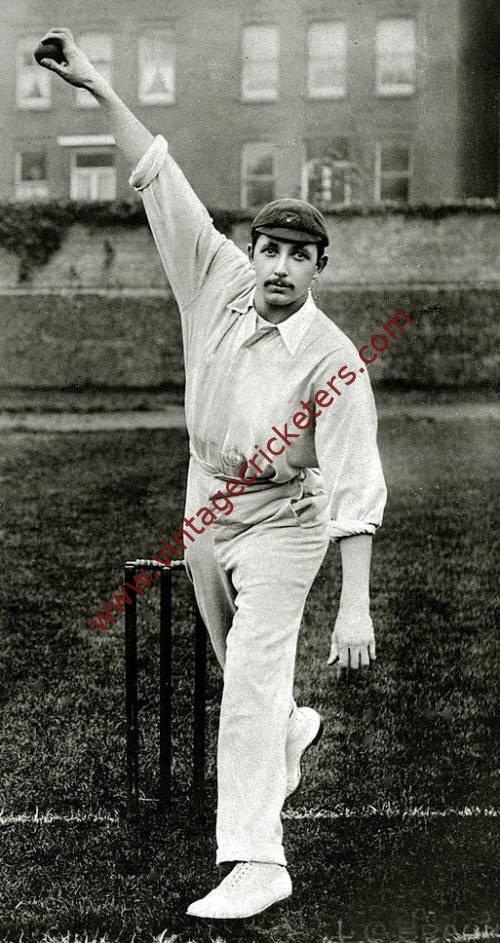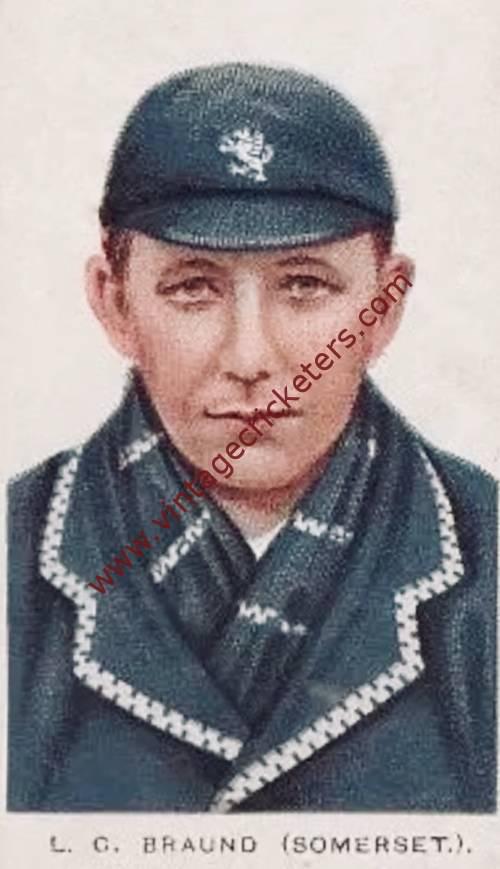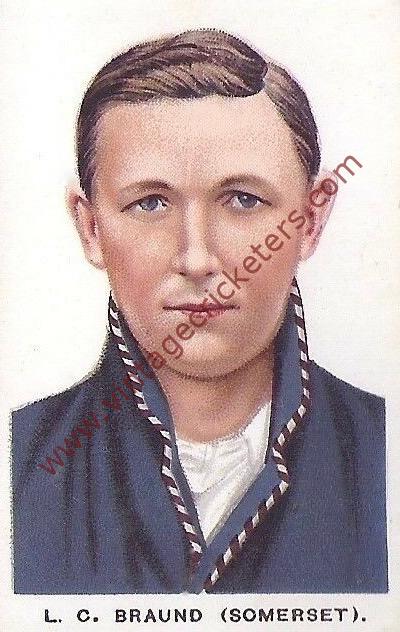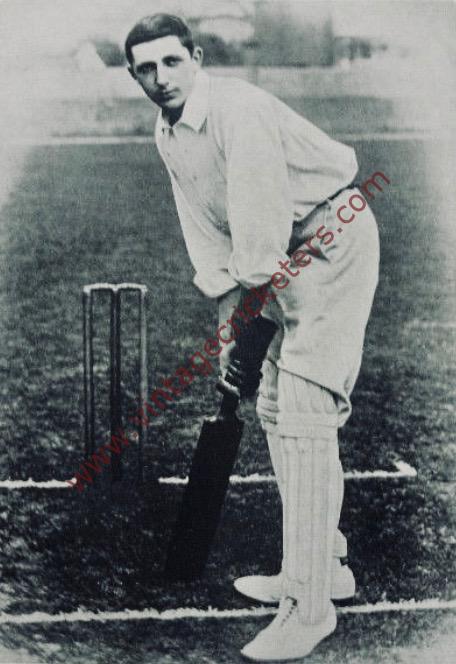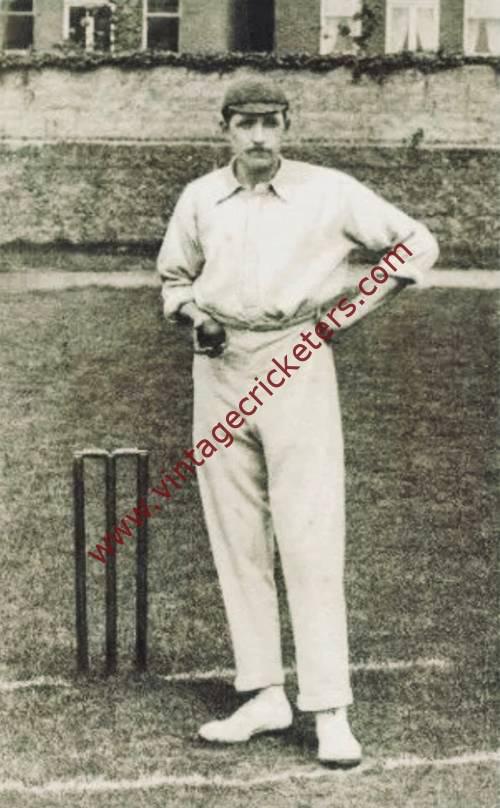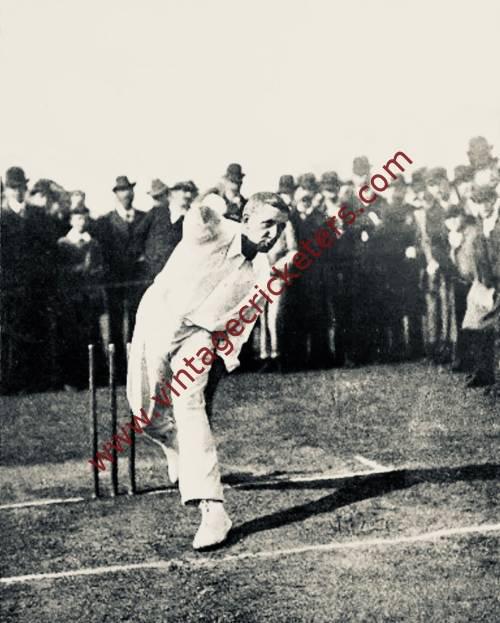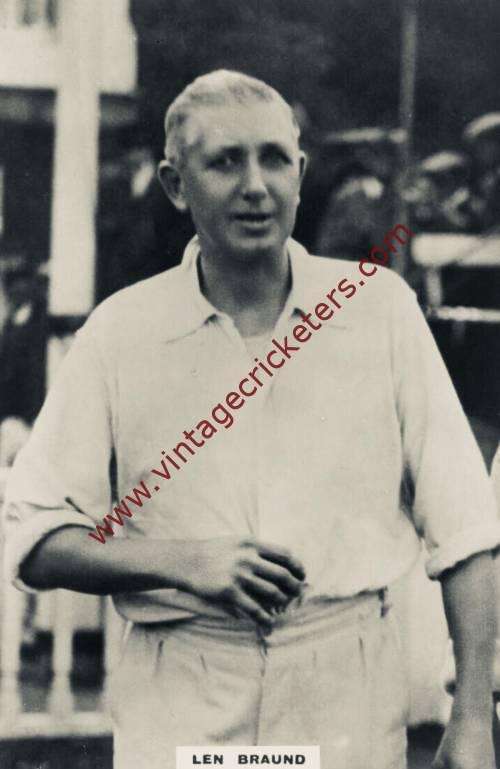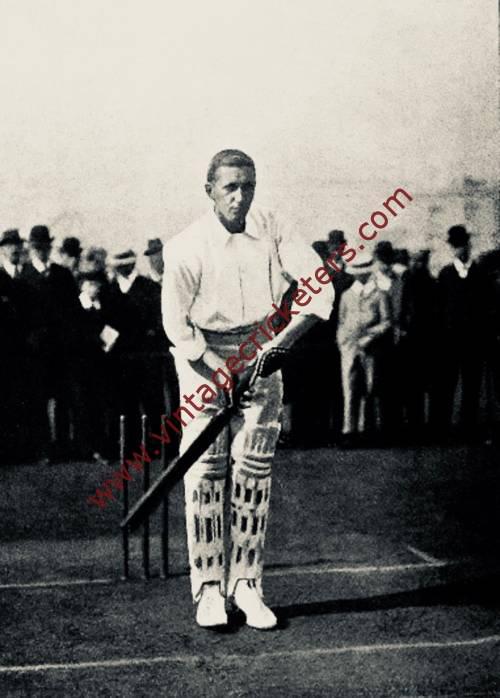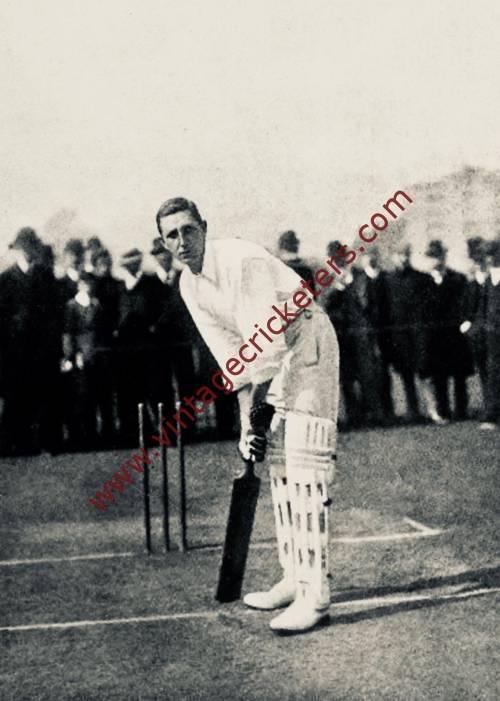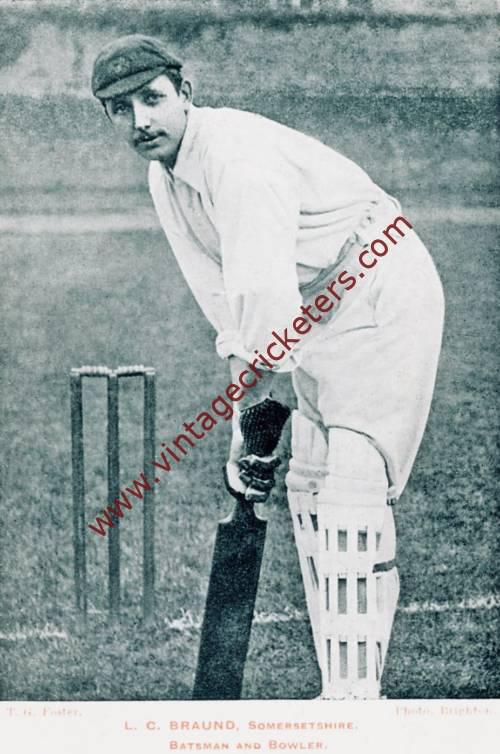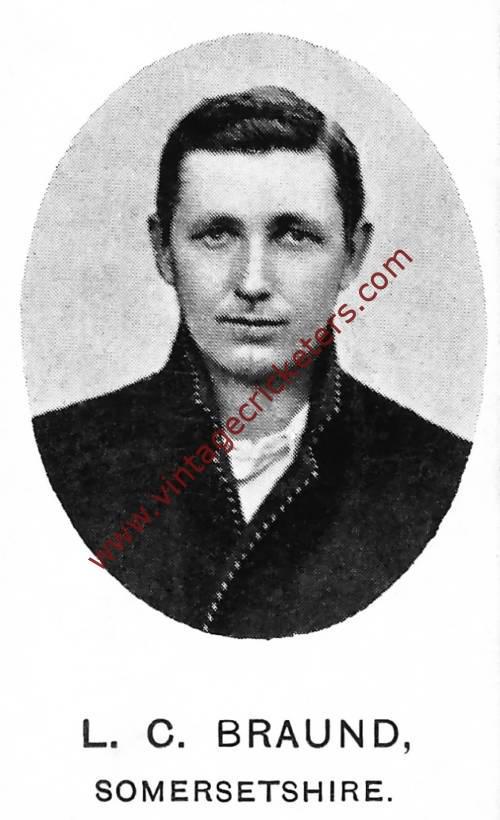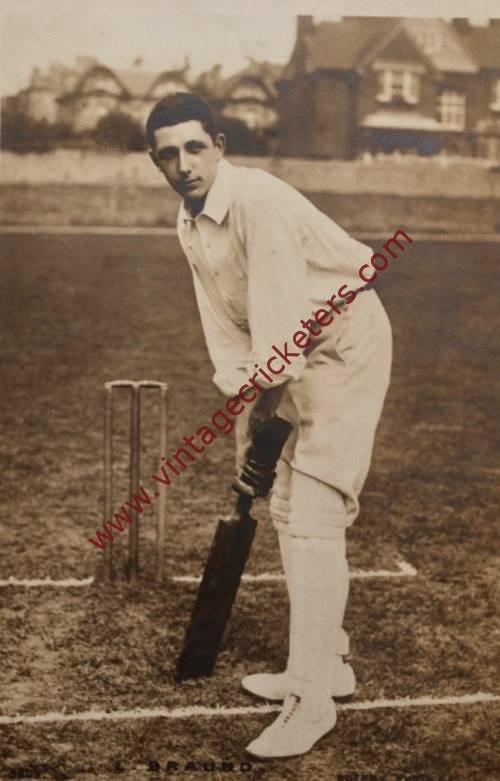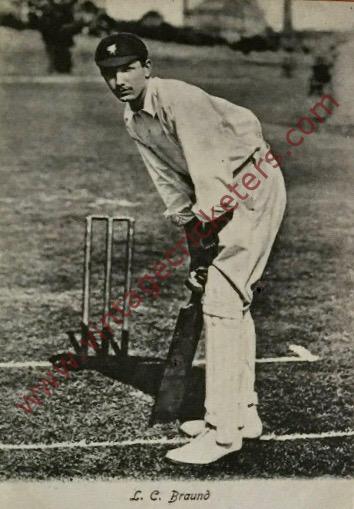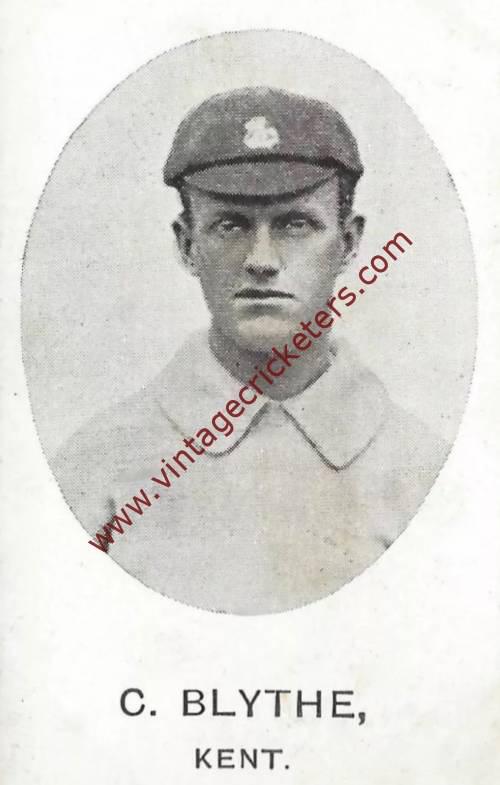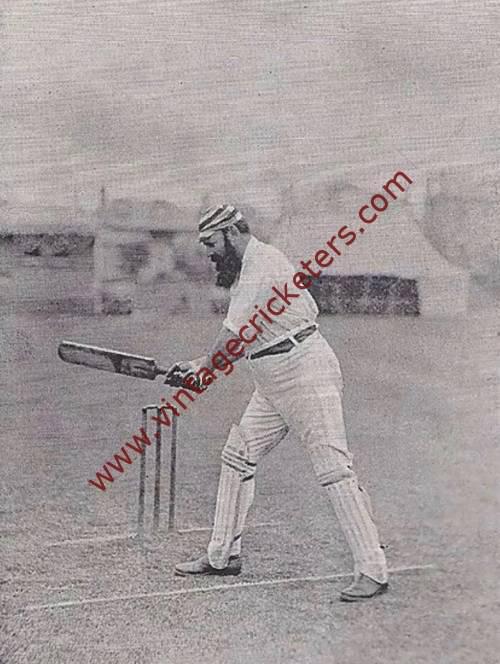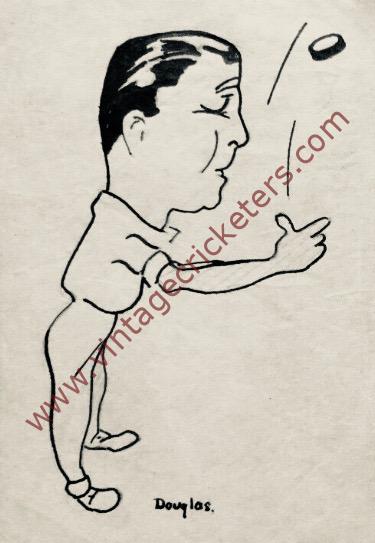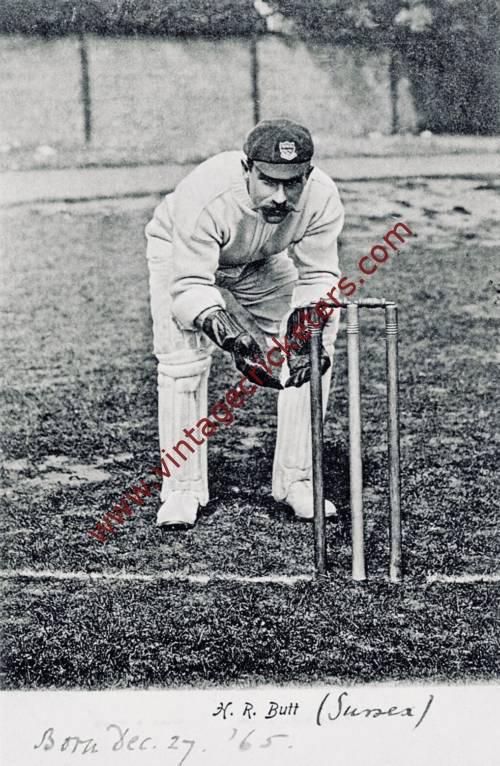Description
Clewer, Berkshire born all rounder Len Braund was a versatile batsman who could defend or attack according to the needs of the game and a leg break bowler who used variation more than accuracy to take wickets. He was also regarded by contemporaries as the best slip fielder of his time.
Braund played 21 times from 1896 for Surrey before joining Somerset, where he had to qualify to play in County Championship games by residence. On his Somerset debut, he hit 82 against the 1899 Australians. The following year, he made his Championship debut for Somerset against Middlesex at Lord’s, in Andrew Stoddart’s last match; but this was also Braund’s last match of the season for Somerset, as Marylebone Cricket Club (M.C.C.) ruled that he was not properly qualified. To fill in the waiting, he played for W. G. Grace’s London County side.
Braund’s proper career with Somerset started from 1901, and in his first full season he scored more than 1,000 runs and took over 100 wickets. He scored 107 in a stand of 222 with Lionel Palairet (who scored 173) in a remarkable match at Headingley when Somerset, 238 behind Yorkshire on the first innings, put up 630 in the second innings and won the match by 279 runs, Braund taking four wickets as the home team collapsed to 113 all out in the second innings. It was Yorkshire’s only defeat of the season, and Somerset repeated that feat in 1902, a closer match won by just 34 runs in which Braund took 15 wickets for 71 runs, including a career-best 9-41 in the second innings, a season in which he claimed a career-best 172 wickets for less than 20 runs each.
In between these two county matches, Braund had become a Test cricketer, selected for the 1901-02 England tour of Australia. He was an instant success in Tests, scoring 58 in his first Test innings and taking seven wickets, including 5-61 in the second innings, as England beat Australia by an innings at Sydney that December. In the third Test, at Adelaide, he scored an unbeaten 103, and in the series as a whole he led the England team by taking 21 wickets.
Named as one of the Wisden Cricketers of the Year in 1902, Braund played all five matches in The Ashes series that season and was involved in many of the crucial incidents in a very close contest. He caught Clem Hill at Edgbaston off George Hirst by running from slip round to the leg side; Australia were all out for 36, their lowest Test total. At Old Trafford, he came in with England at 44-5 and scored 65, putting on 141 with Stanley Jackson; in the same match, he was the bowler off whom Fred Tate missed a skied catch from Joe Darling that enabled Australia to win by three runs.
Braund’s second tour to Australia in 1903-04 was also successful. He scored 102 at Sydney while Tip Foster was scoring his then-record 287, and he took 8-81 in the first innings of the final Test at Melbourne, his best Test return. His third visit to Australia in 1907-08 was less of a success, but in between he had scored a third Test century, making 104 against the 1907 South African team that included the sensational googly bowlers who had brought South Africa its first Test victories over England in 1905-06.
In all, he played 23 Tests for England between 1901 and 1908, scoring 987 runs at an average of 25.97 and taking 47 wickets at 38.51 a piece. Playing 432 first class cricket matches in his career, Braund did the double of 1,000 runs and 100 wickets in the season three times, in 1901, 1902, and 1903, and scoring 1,000 runs in another three seasons and taking 100 wickets one time else. In a career that lasted until 1920 he scored 17,801 runs at an average of 25.61, with 25 centuries and 75 half centuries and a highest score of 257 not out. With his bowling he took 1,114 wickets at an average of 27.28 with a best performance of 9-41, bowling 80 five wicket innings and taking ten wickets in 16 matches. In the later part of his career, he lost the ability to spin the ball and became very expensive; by 1910, he played for Somerset largely as a batsman. He took 546 catches in his career and also made one stumping as an emergency wicket-keeper.
C. B. Fry, the former England captain, said of Braund: “He was one of the greatest all-round cricketers – and to think that Surrey let him go! The thing about Len Braund was that he was a big-match player. I have never seen a better slip fieldsman. He had such a delicate hand. He would push it out and the ball would stick. Archie MacLaren would never take the field without him. He was a most valuable member of the England team and as cool as a cucumber.”
C. T. Bennett, captain of the 1925 Cambridge University team, said of him: “Braund was the greatest gentleman in cricket, either amateur or professional, I ever met. His coaching made the 1925 side, four of whom played for the Gentlemen at Lord’s that year, and K.S. Duleepsinhji would be the first to admit that he owed him a lot.”
After retiring, Braund coached at Cambridge University and was a first class umpire for 18 seasons to 1938, standing in three Test matches between 1926 and 1929. In later life he was one of the first 26 former professionals to be granted honorary membership of M.C.C. in 1949.

